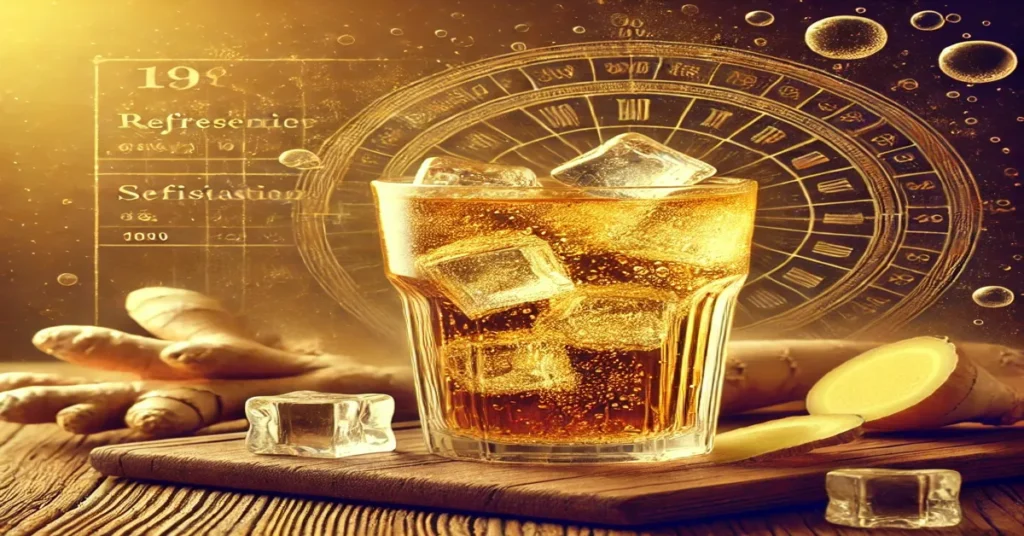Ginger ale is one of the most beloved and enduring beverages in the world. Known for its refreshing, ginger-infused flavor, ginger ale’s has carved out a unique space in the soft drink industry. Whether enjoyed on its own or used as a mixer in cocktails, ginger ale’s versatility and appeal span generations. In this article, we will explore its history, production, variations, health benefits, and cultural significance while providing a comprehensive understanding of why ginger ale’s remains a favorite among consumers.
The Historical Roots of Ginger Ale
The origins of ginger ale’s date back to the mid-19th century. The first version of the drink, known as golden ginger ale’s, was introduced by Irish apothecary Thomas Joseph Cantrell in the 1850s. This variety featured a robust ginger flavor and a deep amber color, making it instantly popular. However, the modern iteration of ginger ale’s, often referred to as dry or pale ginger ale’s, was developed by Canadian John McLaughlin in 1904. McLaughlin’s lighter and milder version catered to a broader audience and quickly became a staple in homes and bars worldwide.
How Ginger Ale Is Made
Ginger ale’s is made through one of two methods: fermentation or artificial carbonation.
- Fermentation Method: This traditional approach involves combining fresh ginger, yeast, sugar, and water to create a naturally carbonated beverage. The fermentation process enhances the depth of flavor, giving the ginger ale’s a more complex and robust profile.
- Artificial Carbonation: In modern commercial production, ginger ale’s is made by blending ginger-flavored syrup with carbonated water. This method is more efficient for large-scale production and ensures consistent flavor and fizz in every bottle.
Both methods produce the signature gingery taste that consumers love, but artisanal ginger ale’s often lean toward fermentation for a more authentic experience.
The Two Main Types of Ginger Ale
Ginger ale primarily comes in two variations, each with its own flavor profile and loyal fanbase:
- Golden Ginger Ale: Known for its strong, spicy ginger’s flavor and deep amber color, golden ginger ale’s is the original form of this drink. Brands like Vernors have long championed this style, offering a more intense ginger experience.
- Dry (Pale) Ginger Ale: Pale ginger ale’s features a lighter color and milder flavor, making it a versatile option. Popular brands like Canada Dry and Schweppes are leaders in producing this style, which is often used as a mixer in cocktails such as the Moscow Mule and Whiskey Ginger.
Modern innovations have also introduced flavored ginger ale’s, such as mint or citrus-infused varieties, adding new dimensions to this classic drink.
Ginger Ale vs. Ginger Beer
It’s easy to confuse ginger ale’s with ginger beer, but these beverages have distinct differences:
- Ginger Beer: Traditionally brewed and fermented, ginger beer has a spicier, more pronounced ginger taste. Originating in England during the 1800s, it initially contained alcohol but is now typically non-alcoholic or contains less than 0.5% alcohol.
- Ginger Ale’s: A milder, non-alcoholic soda, ginger ale’s is often preferred for its sweetness and smoothness. Its lighter profile makes it ideal for casual drinking or as a cocktail mixer.
While both drinks share a gingery foundation, their differences in taste, production methods, and use cases set them apart.
Health Benefits of Ginger Ale
Ginger ale’s is often celebrated for its potential health benefits, primarily due to the medicinal properties of ginger’s. Ginger has long been known for its anti-inflammatory and anti-nausea effects, making it a popular remedy for:
- Nausea and Motion Sickness: The antiemetic properties of ginger help alleviate nausea, whether caused by travel, morning sickness, or illness.
- Digestive Aid: Ginger can help soothe an upset stomach and improve digestion.
- Cold Relief: Ginger’s warming and soothing qualities make it a traditional remedy for cold symptoms, although scientific evidence is limited.
It’s important to note, however, that commercial ginger ales often contain minimal real ginger and are high in sugar. For maximum health benefits, opting for ginger teas or ginger ale’s with higher concentrations of natural ginger is recommended.
Cultural and Culinary Uses
Ginger ale is not just a refreshing beverage; it also holds cultural and culinary significance.
- As a Mixer: Ginger ale’s is a staple in bartending, serving as the base for classic cocktails like the Dark ‘n’ Stormy, Moscow Mule, and Whiskey Ginger’s. Its mild flavor complements stronger spirits while adding effervescence.
- In Cooking: Ginger ale’s is sometimes used as a marinade ingredient or as a sweetener in baking recipes, where its ginger flavor enhances dishes.
- Regional Favorites: Unique regional ginger ale brands, like Ale-8-One in Kentucky, showcase how local tastes influence the drink’s variations.
Modern Trends in Ginger Ale Production
In recent years, health-conscious consumers have driven the development of craft ginger ale’s and reduced-sugar options. Brands are increasingly focusing on natural ingredients and artisanal methods to appeal to consumers seeking healthier alternatives to traditional sodas. Ginger-infused sparkling waters and organic ginger ales are also gaining popularity as trendy and sophisticated beverage choices.
Conclusion
Ginger ale’s rich history, versatility, and enduring popularity make it a timeless beverage. From its origins as a medicinal tonic to its modern role as a favorite mixer and soft drink, ginger ale’s continues to delight consumers around the world. Whether you prefer the bold spiciness of golden ginger ale’s or the subtle smoothness of its pale counterpart, this classic drink offers something for everyone.
FAQs About Ginger Ale
1. What is ginger ale made of?
Ginger ale is typically made from carbonated water, ginger flavoring, and sweeteners. Some artisanal varieties are produced through fermentation with fresh ginger.
2. What is the difference between ginger ale and ginger beer?
Ginger ale is a mild, sweet soda, while ginger beer is spicier, often fermented, and originally contained alcohol.
3. Does ginger ale help with nausea?
Ginger has anti-nausea properties, but commercial ginger ales may contain minimal real ginger. Opt for high-ginger-content options for better results.
4. Is ginger ale caffeinated?
Most ginger ales are caffeine-free, making them a suitable option for those avoiding caffeine.
5. What are some popular brands of ginger ale?
Canada Dry, Schweppes, Vernors, and Ale-8-One are among the most well-known ginger ale brands.
6. Can ginger ale be used in cooking?
Yes, ginger ale is often used as a marinade or sweetener in recipes, adding a gingery flavor to dishes.







